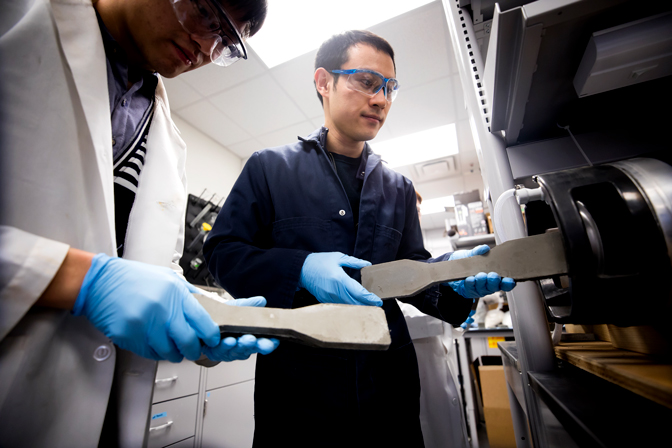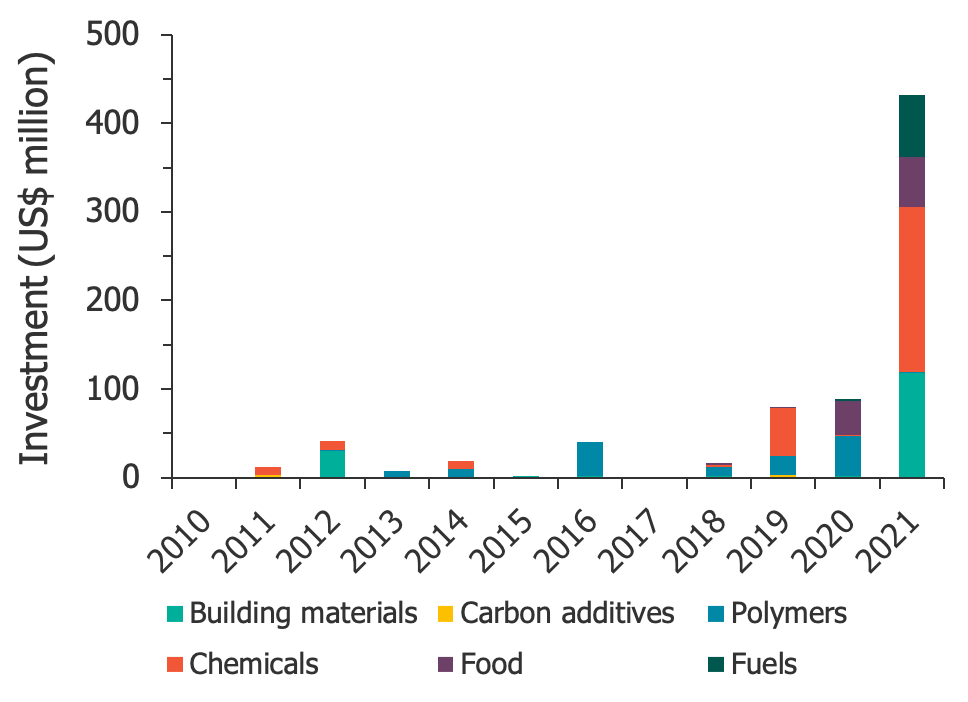
Carbon capture, utilization and storage roadmap reveals technologies that are ready to go
Concrete and construction aggregates could be carbon negative and dollar positive while sustainable aviation fuel and methanol could also turn a profit.

Concrete and construction aggregates could be carbon negative and dollar positive while sustainable aviation fuel and methanol could also turn a profit.
When the Global CO2 Initiative first came to the University of Michigan in 2018, removing carbon dioxide from emissions or the air and using it to make profitable products seemed like a distant dream. That’s beginning to change, says Volker Sick, director of the initiative and a professor of mechanical engineering.
The group released a market study and roadmap in September, titled, “Implementing CO2 capture and utilization at scale and speed.” It highlights technologies that are ready to roll out, what is in the pipeline and strategies for supporting the growth of this new field.
Products that remove carbon dioxide for a very long time are the best solution for the environment. These are essentially building materials including pre-cast concrete and aggregates like gravel and sand.

The concrete, developed in Victor Li and Brian Ellis’s lab, also offers a performance advantage because the concrete becomes stronger when it absorbs carbon dioxide during the curing process. Adding aggregates made with CO2 to this concrete removes even more CO2. Lastely, their concrete includes fibers that add flexibility to the material to prevent cracking – offering a longer lifetime for the concrete.
If we build up the capacity to make aggregates and concrete, we could remove or divert up to 10 gigatons of carbon from the atmosphere per year.
Sustainable aviation fuels are a huge opportunity. While it is feasible to electrify mobility on the ground, this is not (yet) practical for long-haul flights. Captured carbon can fit into existing processes for producing fuels including the kerosene typically used in aviation.

However, at present, sustainable aviation fuels made from CO2 would come at a premium, with this market geared initially toward people who fly private planes. For this market, money is no object, so doubling or even tripling the fuel cost is worth the moral advantage of flying with sustainable fuel. As with solar panels, we anticipate the cost would fall rapidly with adoption, making sustainable aviation fuels practical for commercial flights in the long term.
Another market that would tolerate the initial high cost of production is the military, which currently ships aviation fuels at great expense, with high security concerns. If you can make fuels on site or on the way, that would reduce the risk for supplies and lives. Due to the substantial cost of transporting aviation fuels, making fuel from captured carbon is already competitive.
The other technology that is ready to go in this track is methanol—essentially methane with the addition of an oxygen atom. Methanol is used in many industrial processes resulting in a broad array of products like adhesives, solvents and foams. It can also be used directly as a marine fuel for shipping.
For all of these technologies, a critical aspect of carbon reuse is emissions-free electricity sources. As we build new industrial capacity at locations where emissions can be harvested and processed, such as steelworks, the way we power these new factories also matters.
One good sign we’ve seen is that venture capital (VC) funding for carbon capture and utilization technologies more than quadrupled in 2021 compared to 2020 and 2019. VC firms have seen enough technology advancement that the risk of failure is much lower than before. Also, policy changes in Europe, Asia and the US support activities related to carbon capture, utilization and storage. This is an opportunity to invest and grow in an emerging industry.

How quickly it grows will depend on incentives like carbon pricing and tax breaks. It will probably follow a path similar to solar and wind energy, with massive support for installations eventually driving down prices until the industry sustains itself.
We also encourage the adoption of our life cycle analysis and techno-economic assessment toolkit, which objectively and transparently measures the environmental and economic benefits and risks of a given technology. This is particularly important to use in early stages of technology research and development in order to guide progress towards market introduction. Our toolkit is already in use at universities, companies and government agencies, including the U.S. Department of Energy, but adoption by the International Organization for Standardization would help ensure we are comparing global technologies fairly.
Sick is also an Arthur F. Thurnau Professor and a professor of mechanical engineering.